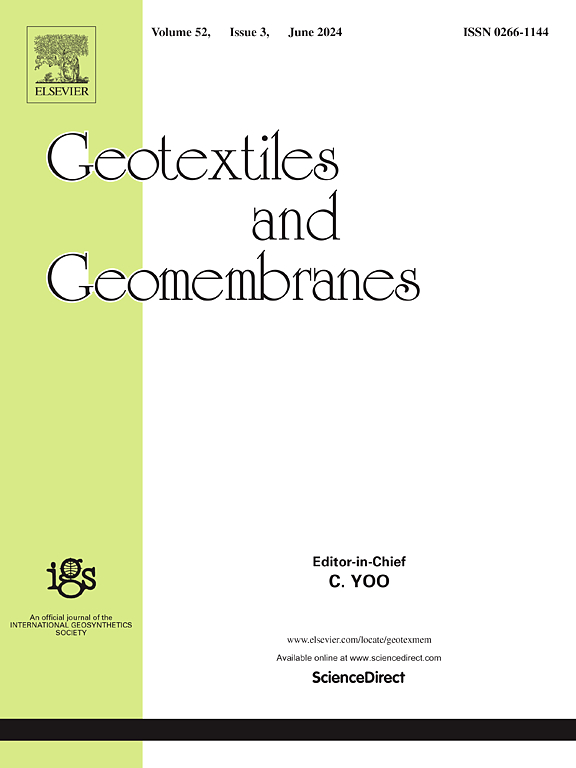Optimization and performance analysis of novel waste EPS bead-sand composite cushions for rockfall mitigation: An integrated experimental and numerical study
IF 6.2
1区 工程技术
Q1 ENGINEERING, GEOLOGICAL
引用次数: 0
Abstract
Orthogonal Experimental Design (OED) and Response Surface Methodology (RSM) optimized waste Expanded Polystyrene (EPS) bead-sand composite cushions, identifying an optimal EPS content of 38.79 % by volume for superior energy absorption and load distribution. The novel SE-S-F layered configuration (EPS-sand mixture over pure sand) reduced RC slab tension damage by 79.7 % compared to traditional sand cushions and crack width by 92.3 % relative to the EPS-sand mixture, surpassing monolithic designs. It minimized transmitted forces, accelerations, and energy dissipation while promoting flexural cracking for enhanced structural protection. Validated numerical simulations accurately modeled impact dynamics, enabling reliable performance predictions. Successive impact tests confirmed the SE-S-F configuration's multi-impact resistance, achieving a non-dimensional factor (Ω) of 1.47 by the fifth impact, outperforming geofoam-based designs. Repurposing waste EPS, this approach delivers lightweight, sustainable, and cost-effective rockfall protection systems, enhancing safety in mountainous regions and transportation corridors.
新型废EPS珠砂复合岩崩缓冲垫优化与性能分析:实验与数值综合研究
利用正交试验设计(OED)和响应面法(RSM)对废旧膨胀聚苯乙烯(EPS)珠砂复合材料垫块进行了优化设计,确定EPS的最佳体积含量为38.79%,具有较好的能量吸收和负荷分配效果。与传统的砂垫层相比,新型SE-S-F分层结构(eps -砂混合物在纯砂上)将RC板的拉伸损伤减少了79.7%,与eps -砂混合物相比,裂缝宽度减少了92.3%,超过了单一设计。它最大限度地减少了传递力,加速度和能量耗散,同时促进弯曲开裂,增强结构保护。经过验证的数值模拟准确地模拟了撞击动力学,实现了可靠的性能预测。连续的冲击测试证实了SE-S-F结构的多重抗冲击性,在第五次冲击时实现了1.47的无因次系数(Ω),优于基于土工布泡沫的设计。通过重新利用废弃EPS,该方法提供了轻质、可持续、经济高效的岩崩防护系统,提高了山区和交通走廊的安全性。
本文章由计算机程序翻译,如有差异,请以英文原文为准。
求助全文
约1分钟内获得全文
求助全文
来源期刊

Geotextiles and Geomembranes
地学-地球科学综合
CiteScore
9.50
自引率
21.20%
发文量
111
审稿时长
59 days
期刊介绍:
The range of products and their applications has expanded rapidly over the last decade with geotextiles and geomembranes being specified world wide. This rapid growth is paralleled by a virtual explosion of technology. Current reference books and even manufacturers' sponsored publications tend to date very quickly and the need for a vehicle to bring together and discuss the growing body of technology now available has become evident.
Geotextiles and Geomembranes fills this need and provides a forum for the dissemination of information amongst research workers, designers, users and manufacturers. By providing a growing fund of information the journal increases general awareness, prompts further research and assists in the establishment of international codes and regulations.
 求助内容:
求助内容: 应助结果提醒方式:
应助结果提醒方式:


